At ColorSpace, we specialize in image quality adjustments, utilizing our expertise in imaging technology and quality to offer IQ adjustment services for the camera development chain, from camera modules to final imaging products. ColorSpace boasts multiple fully-equipped image quality laboratories, including all necessary tools for optimizing camera image quality, calibration, testing, and benchmarking, providing practical solutions for digital camera-based products.
In addition, we collaborate with clients across various domains, delivering image quality testing and tuning solutions and services. Image quality adjustment is an ongoing process. Whether you're looking to adjust from scratch or improve existing adjustments, we can provide assistance.
To convert imaging information from sensors into visually appealing images and videos using complex image signal processing pipelines, multiple iterations are required. This process, known as camera tuning or ISP tuning, demands a deep understanding of image quality assessment (IQA), which serves three primary applications:
We have a broad customer base in various camera markets, especially in fields like consumer electronics for mobile phones, surveillance cameras, automotive imaging, medical imaging, conference videos, and more. In these areas, image quality and the accuracy of real-time decisions made by algorithms are crucial—achieved through image processing algorithms capable of enhancing images in real time under different conditions. Our expertise in various commonly used image chip platforms and sensors enables us to offer professional and efficient image quality testing and tuning services (Camera Tuning).
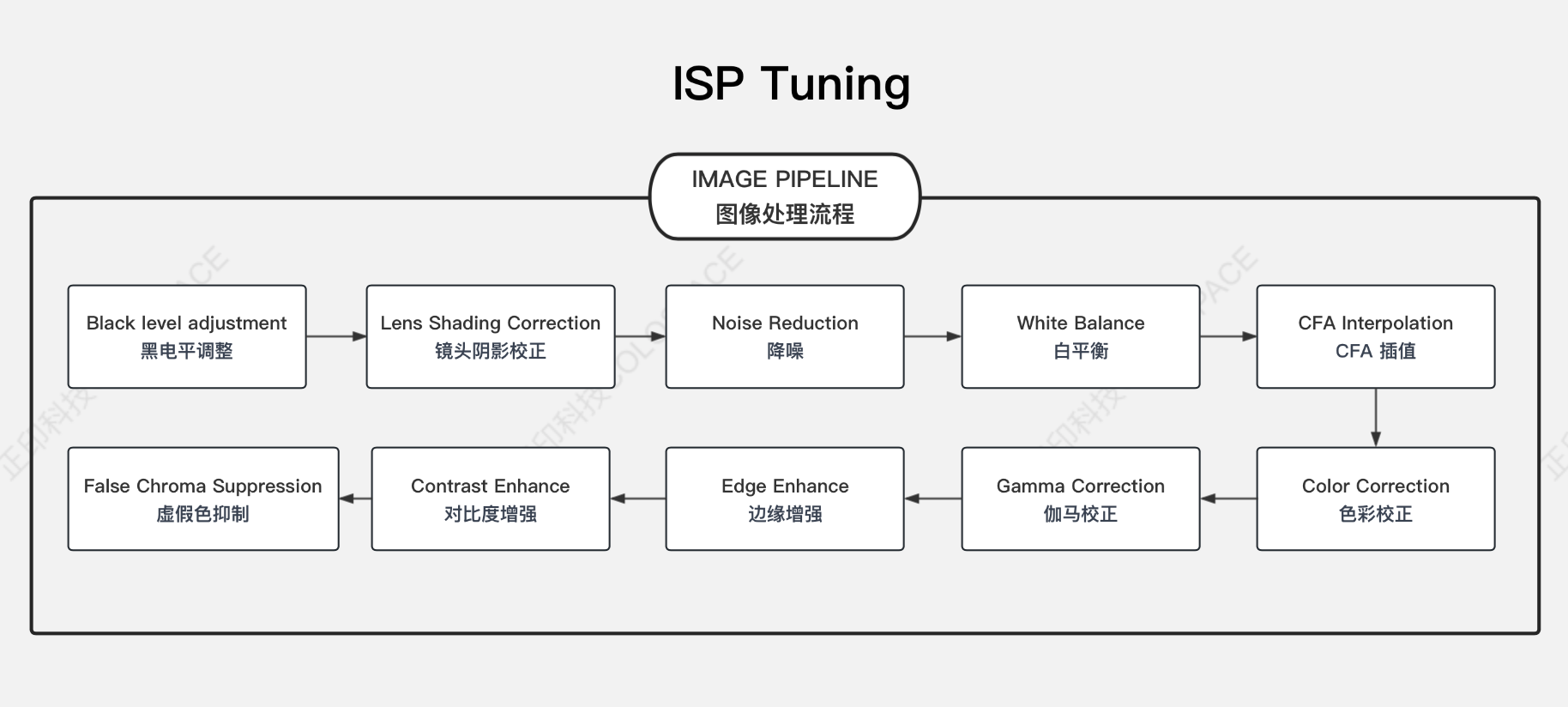
ISP Tuning Schematic
Image Signal Processing (ISP) is the method of converting raw data from a sensor into the final compressed image. Tuning involves optimizing ISP parameters, which aid in calibrating and modifying existing parameters such as filters and LUTs (Look-Up Tables), including exposure control, white balance correction, autofocus, noise reduction, sharpness enhancement, black level adjustment, gamma, and color correction and mapping. The image processing pipeline plays a critical role in overall image quality. The complexity of image processing increases correspondingly with the improvement in image resolution. However, adjusting the image pipeline for a specific camera system is a challenging task due to the multitude of parameters, as different lenses, camera modules, and sensors possess distinct characteristics.
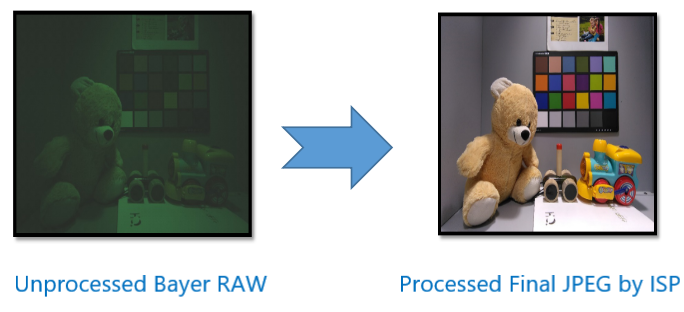
Figure 2: Difference between unprocessed and processed images
Multiple factors can degrade the image quality captured by a camera. ISP tuning can transform the real-time generated raw data from the camera sensor into digital color images. In addressing these artifacts, digital cameras integrate complex Digital Signal Processing (DSP) in the image processor, referred to as the "ISP Pipeline." Additionally, some other artifacts are introduced by the physical properties or operational principles of the image sensor, such as those caused by temporal and spatial integration of the image signal and spectral distribution of the color filter. Therefore, the ISP Pipeline stands as a crucial component of the camera system, vital for producing high-quality digital images.
There are no standard indicators for image quality, and different applications expect different tendencies of image quality because the same camera can be used in multiple ways. Cameras need to capture high-quality photos in various lighting scenarios, such as indoors, in bright sunlight, and relatively dark environments. Image processing needs to be highly flexible and configurable to maximize quality in each scenario. Digital camera systems include lenses, camera modules, and sensors. All components affect image quality and interact with each other. Therefore, the image pipeline must be adjusted based on the characteristics of specific camera system components. The challenging part of this task arises from the following three key parameters:
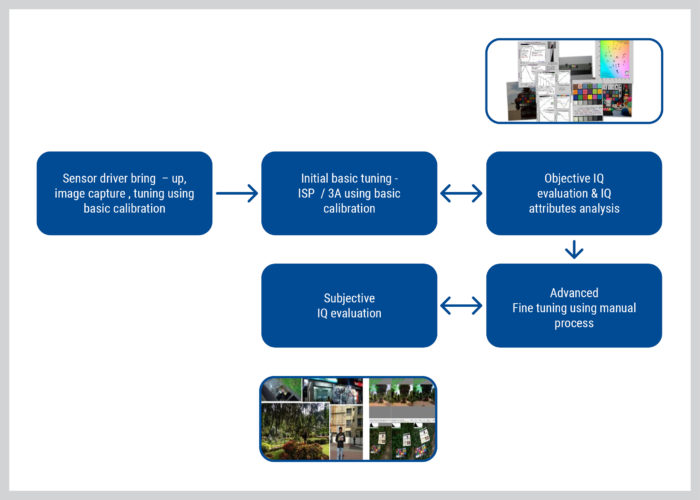
Figure 3: Typical Image Quality (IQ) Adjustment Flow
Once your camera system is activated, multiple algorithms start analyzing the camera's optical hardware and software. For example, determining the focus value based on the distance between the camera lens and objects in the scene; establishing accurate white balance settings based on the scene's color temperature and light intensity; measuring the amount of light present in the scene to calculate exposure appropriately for maintaining proper brightness. Objective adjustments ensure that all IQ parameters are within the limits or thresholds required by the IQ standards.
Objective IQ assessment involves capturing images under controlled lighting conditions with standard test images and measuring IQ parameters using Imatest© software. This includes automatic white balance (AWB), color accuracy and saturation, auto-exposure (AE) errors, noise, uniformity, defective pixels, sharpness, dynamic range, distortion, AE/AWB convergence time, among others. KPI evaluations based on customer preferences involve subjective adjustments in visual algorithm accuracy due to ISP parameter configuration changes, capturing images in the field, identifying image quality issues, and changing ISP settings to address these issues. To address image problems, we must analyze different images to determine the root cause.
Consider the scenario where one of the captured photos appears blurry; our thought process is as follows:
Subjective IQ assessment includes: analyzing images/videos of real-life indoor and outdoor scenes under different lighting conditions. For static images, focus areas include: color accuracy, representative colors (such as grass, sky, ocean, fruits, etc.), skin tones, noise levels, and details (jaggies, moiré patterns, sharpening artifacts, etc.), Automatic White Balance (AWB) decisions, brightness (AE) and tonal range, glare, distortion, vignetting (optical), motion artifacts (rolling shutter artifacts), etc. For video capture, considerations include: video block effects, motion artifacts, AE convergence and AWB convergence/oscillation, details/textures, noise levels, and so forth.
Our image quality lab has state-of-the-art facilities and advanced tools for image quality adjustment, benchmarking, camera calibration and more. We can provide hardware and software tools with a wide range of functional analysis test charts to help you reach your camera requirements and safeguard image quality. Software programs provide objective and subjective measurements of imaging systems on a variety of in-house standard image quality metrics based on use cases or customer KPIs, providing you with comprehensive, detailed product benchmarking and comparison reports.
Starting with the common rearview camera, cars rely on cameras for a variety of functions, including obstacle detection, driver monitoring, panoramic views, and even CMS. Self-driving vehicles rely heavily on camera images to supplement their LiDAR and radar sensors. All of this means that it is more important than ever for cars to have good camera quality. With extensive experience in Advanced Driver Assistance Systems (ADAS) in imaging and vision systems, Positive Printing Technology can provide self-developed ADAS camera temperature drift test systems, which, together with our image tuning services, make us a reliable partner for the development of your automotive imaging solutions.
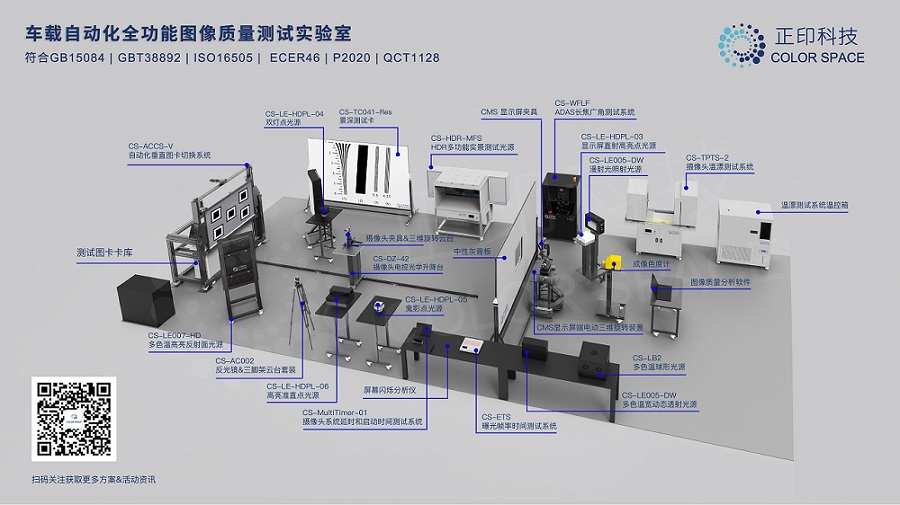
For medical imaging, especially in endoscopy and ophthalmology, we have extensive experience. We're capable of accurately identifying issues related to lenses, sensors, and ISP, assisting clients in prompt resolutions, thereby reducing time to market and cutting costs. Additionally, we offer comprehensive imaging system development collaboration, including pre-market exploratory testing and certification services.
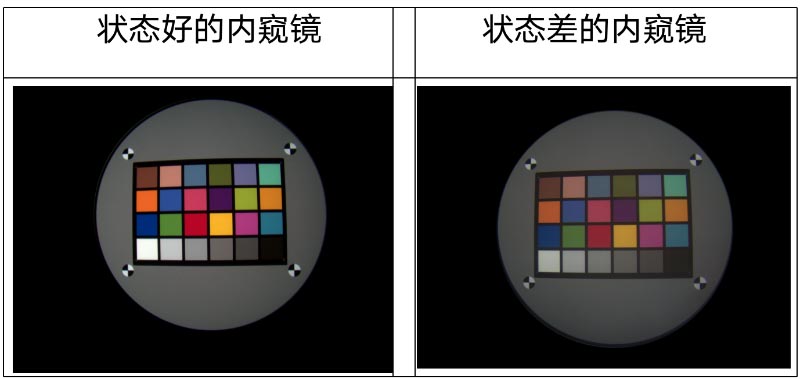
If you have any questions about image quality or would like to discuss it with us, please feel free to contact us!
Email:sales@colorspace.com.cn
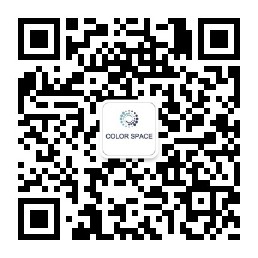
Follow [ColorSpace] for industry news/events/solutions
Contact: sales@colorspace.com.cn
Phone: 15817270587
Tel: 400-886-3881(周一至周五 9:00~18:00)
Email: sales@colorspace.com.cn
Add: South Building #2-1101, Lv Di Qi Hang Office Building, Hou Sha Yu, Shun Yi District, Beijing, China